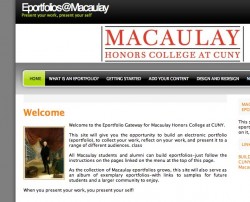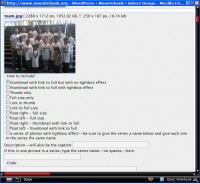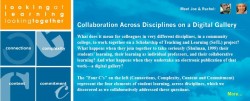Well, I’m here to tell you it can definitely be done. I’m not the first to discover this, of course, but I really was surprised to see just how well, and how easily, it works. My favorite art historian wanted (with her colleague) to turn all the content they had developed (“lectures” from online courses, podcasts, YouTube videos, flickr images, great sites and web resources) into a kind of free, multimedia, online textbook for art history.
Their experience was that most of the art history textbooks for undergraduates were just, well, wrong. They were pitched to a level that didn’t match, they weren’t engaging in either style or content, and they managed to turn the exciting social history part of art history into just more dull-as-dishwater, decontextualized, blahblah.
(A perfect example of this–today I was in the Art department at my college, and I saw a copy of Gardner’s Art Through the Ages–one of the major textbooks in the discipline, being used extremely effectively, extremely practically….It was used as a booster to lift a computer monitor up to eye level. Probably would make an excellent doorstop or paperweight, too.)
Even the textbook publishers who did have websites connected to their texts seemed to just reproduce the text–nothing towards making them more engaging–and in any case, those sites were closed–available only to people who bought (for more than a few dollars) the print textbooks or some kind of access key.
So they wanted to do something different in style, something open, something making good use of multimedia, something searchable and visually attractive…and they didn’t want to have to learn a whole lot of html, flash, css, and everything else. And they wanted to be able to collaboratively add to and edit the site.
WordPress to the rescue! With a theme they liked, wordpress’ built-in pages and custom fields, and a few expedient plugins (and the help of their friendly neighborhood geek guy–me), over one long weekend they got a very good start, which can easily be continued and expanded, at creating exactly what they wanted…smARThistory.org!
I think the potential here is very exciting–student sites, course sites, more of these “web-books” (or whatever you want to call them), that can be used to publish and collaborate and produce. The idea of the CMS is perfect for this kind of project, and yes, there are many CMS’s out there. But for simplicity of installation, configuration, extension, design…I like the wordpress!
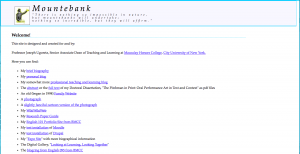 For a very long time (since March 2004) my homepage here at mountebank.org has had the same look. It was clear, and readable, I always thought, and really just a list of links. But it certainly didn’t look too modern. Didn’t really represent very well what I’ve been doing with WordPress lately. The blog was using the first WordPress theme I ever built, and simple as it was, it worked. So, with some time off and a cold day (really a couple of days), I took the chance to do some redesigning. The homepage is now more like a “calling card” with far less on it (although I think I will put a bit more as time goes by).
For a very long time (since March 2004) my homepage here at mountebank.org has had the same look. It was clear, and readable, I always thought, and really just a list of links. But it certainly didn’t look too modern. Didn’t really represent very well what I’ve been doing with WordPress lately. The blog was using the first WordPress theme I ever built, and simple as it was, it worked. So, with some time off and a cold day (really a couple of days), I took the chance to do some redesigning. The homepage is now more like a “calling card” with far less on it (although I think I will put a bit more as time goes by).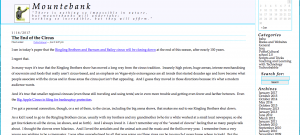 And the blog is still the same old blog (it was fun to look through some old content). I still won’t update it very frequently, probably, but from time to time I’m glad to have it as a medium. And I learned a lot as always in the redesign (also moved to a new host and cloud server). My CSS skills are improving. And my MySQL skills less so. My overall command line comfort is unjustifiably secure. And in WordPress…I pretty much know what I’m doing.
And the blog is still the same old blog (it was fun to look through some old content). I still won’t update it very frequently, probably, but from time to time I’m glad to have it as a medium. And I learned a lot as always in the redesign (also moved to a new host and cloud server). My CSS skills are improving. And my MySQL skills less so. My overall command line comfort is unjustifiably secure. And in WordPress…I pretty much know what I’m doing.

